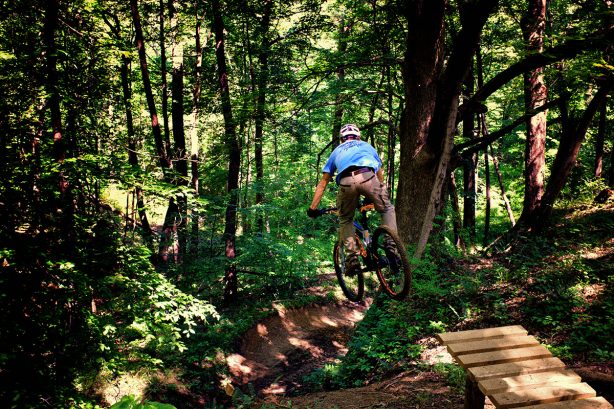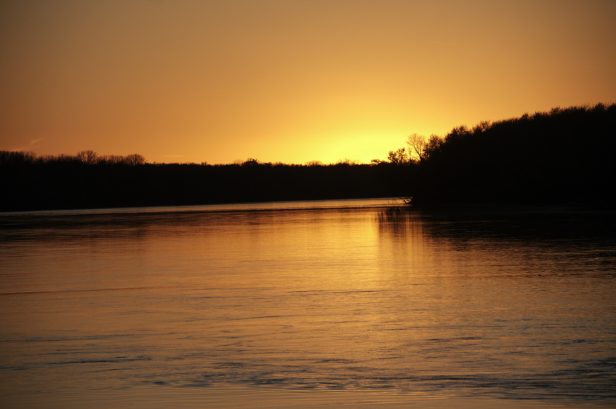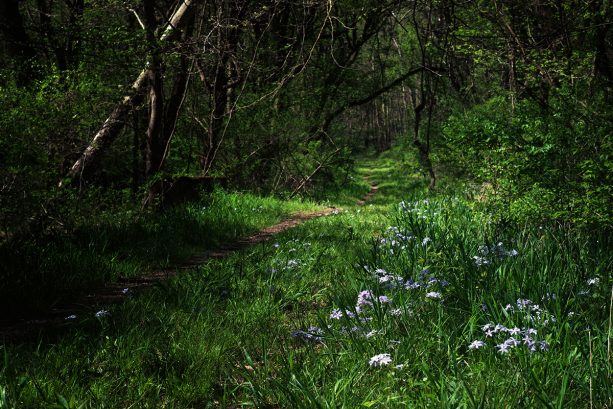Harmonie State Park
Harmonie State Park is a place of great natural beauty, known for its deep ravines, towering old growth forest, and abundant wildlife.
Located just a few miles south of New Harmony, the park is made up of 3,465 acres that include a dry upland area, a lower swampy slough area that borders the Wabash River, and many hills and forest in between. The defining feature of the park is its steep ravines that were carved by glacial meltwaters at the end of the last ice age. There is a lot of sandstone in the bedrock and the lowlands near the river have very sandy soil.
Hikers can enjoy over 40 miles of trails that range from very easy to moderate. Harmonie State Park is one of the best Mountain Biking destinations in the area. Other cycling options range from a paved nine mile loop with challenging climbs to leisurely rides on flat, paved lanes through beautiful scenery. The fishing is great at the park’s scenic ponds, Rush Creek, or from the banks of the Wabash River. Two horse trails round out options for getting out in the park’s unique and beautiful ecosystem.
Or, visitors can just take a leisurely drive around the park, which is especially nice around sunset when you will likely see more than a few white tailed deer. A nice paved road loops across the high land, up and down the wooded hills, through the scenic valleys, all the way to a great picnic area and short walk on the Wabash river’s edge.
Wabash River Park
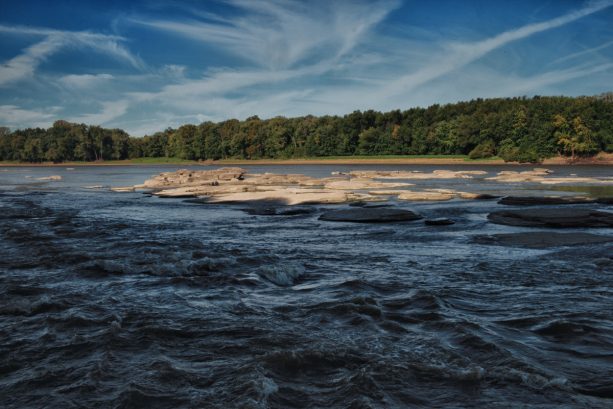
The Wabash River is one of the two great rivers that give Posey County its unique position in the world. The Wabash starts at Grand Lake in western Ohio and flows 475 miles to the Point in Posey County, where it merges with the Ohio.
In the early 1800’s, the Wabash was an important artery for trade with flatboats and steamers transporting goods and passengers. That’s why New Harmony was so prominent at the time. But with the coming of the railroads, commercial traffic disappeared from the Wabash.
Today, the Wabash is used almost exclusively for recreational boating, fishing, and sightseeing. New Harmony, Harmonie State Park, the Old Dam, and Dogtown Ferry Public Fishing Area and Boat Ramp are publicly accessible spots to catch a sunset, cast a line, or just enjoy watching the river flow.
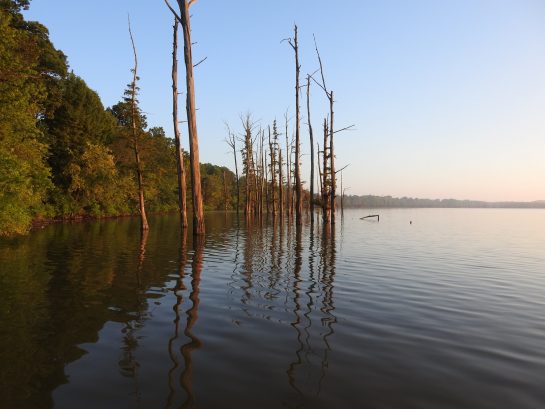
Hovey Lake
Hovey Lake is a 1,400 acre oxbow lake where cypress trees notable for its water foul and other wildlife, great fishing, canoeing and kayaking, and scenic beauty. Visitors may even spot the American Bald Eagle flying around the lake where their nests are located.
The Point
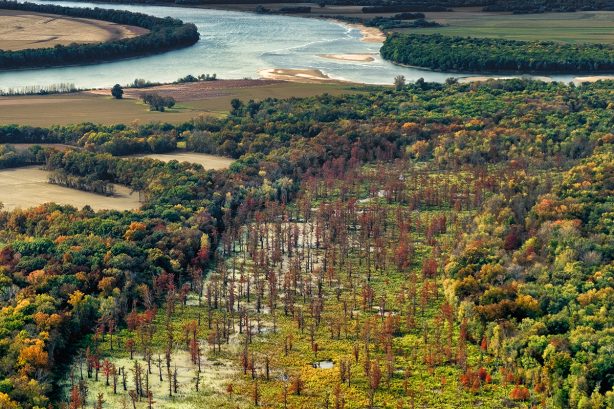
The Point is where the Wabash River meets the Ohio, most often the first thing people notice when they look at a map of Indiana.
It was once an important hub for pre-Columbian cultures and in the early 18th Century. The French built a fort there to protect their trappers and fur traders.
Today, Point Township is a sparsely populated home to fertile farmland and incredible wildlife and nature preserves. It’s a fantastic place for outdoor activities, including boating, kayaking, hunting, fishing, hiking and birdwatching
Cypress Sloughs
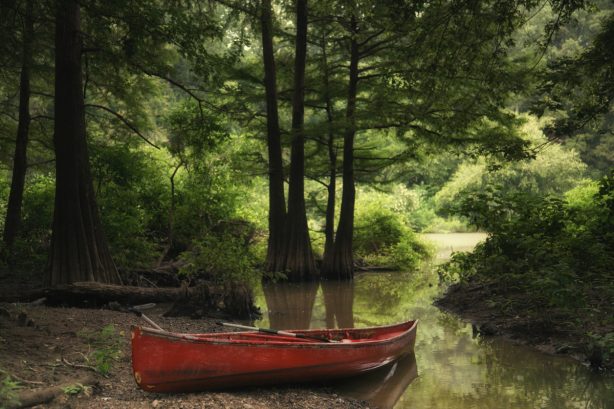
Posey County’s Cypress Sloughs provide the experience of a Deep South ecosystem in Southern Indiana. Magnificent Bald Cypress trees, and their attendant knees, line the water and provide important habitat for an intriguing variety of wetland plants and animals, some that make their home there, others that just pass through.
No two cypress sloughs are identical. Each is unique. But in general, they are areas of slightly lower elevation than the surrounding land. Places where water naturally congregates. The Bald Cypress, which dominates the slough, is a cousin to the California redwood, a deciduous conifer which loses its leaves in winter. Cypress trees are known for their “knees,” woody projections which are part of the root system but pop out of the ground in the area surrounding the trees. Their purpose is unknown but scientists speculate that they provide additional oxygen to tree and/or help anchor the Cypress in the soft muddy soil in which it thrives.


